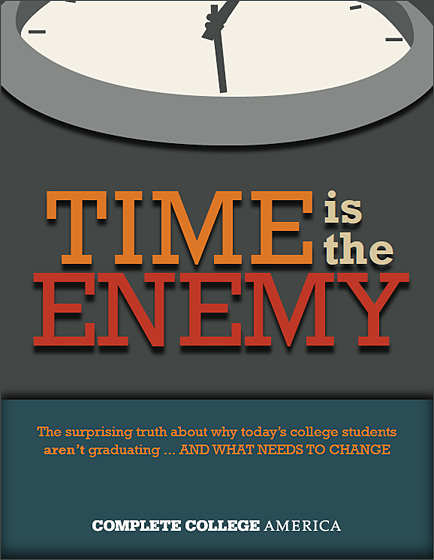An educational system built for another time, another student demographic — by Lloyd Armstrong, University Professor and Provost Emeritus at the University of Southern California
Excerpt:
…This is probably because much of our education system originally was designed around the traditional student and his or her needs, and the leading institutions in the system still serve primarily the traditional student. As a consequence, potential changes in educational approach or organization are most often judged according to whether or not they will benefit those traditional students who enjoy the benefits of residential life and a manageable financial burden. But, as this report describes, times have changed, the composition of the student body has changed, and because many of our institutions have not changed accordingly, the results are not pretty.
In particular, the report focuses on the plight of part time students, and shows that graduation rates for part time students at all levels – certificates, associates, and bachelors – are only about 40% as high as for full time students (if one looks at a time period twice the nominal period required for graduation). Graduation rates for both full time and part time students who are African-American, Hispanic, older, or low income are considerably lower than for the general student body, and the part-time “penalty” is somewhat higher than for the general population.
…
All in all, a very important report, with sensible and meaningful recommendations. I can’t give it an A, however, because I think its basic conclusion in not bold enough – and maybe not even correct. The recommendation is basically to fiddle the system to enable part time students to behave more like full time students, assuming that if they can behave more like full time students they will graduate like full time students. That is not a bad idea, of course, but why not start from the premise that the system itself needs to be redesigned so that it focuses on the needs of the part time students? Maybe the problem is not simply the full time/part time divide, but that the system responds or does not respond to the many and highly varied needs of part time (and by extension, non-traditional) students.
From DSC:
Nice report — well done. My only wish here would be that the costs of obtaining an education were discussed more — as one of the causes of this issue but also a potential/significant piece of the solution. I think cost is one of the key factors as to why more students are becoming part-time students — and thus are more likely susceptible to “life getting in the way.”
There was some mention of this in the solution proposed — which was good to see:
4. Restructure programs to fit busy lives. It’s time to face facts: College students today are going to have to work while trying to graduate. What else can they do when college is so expensive? (emphasis DSC)









